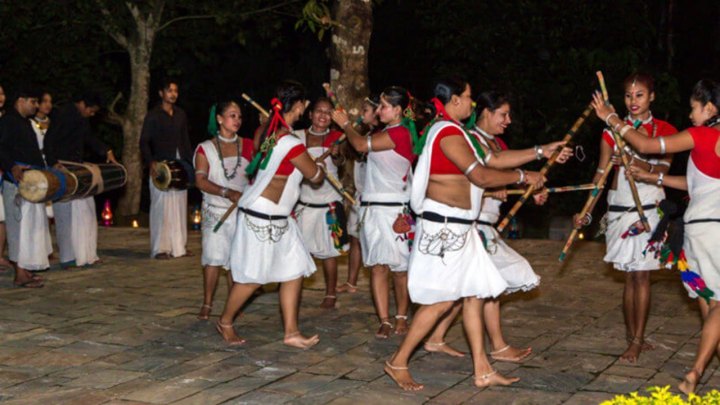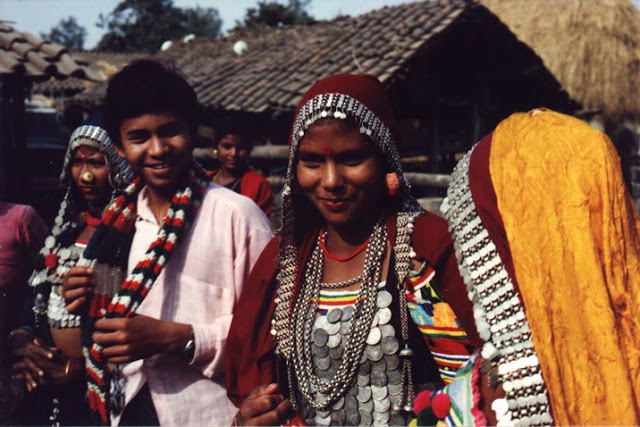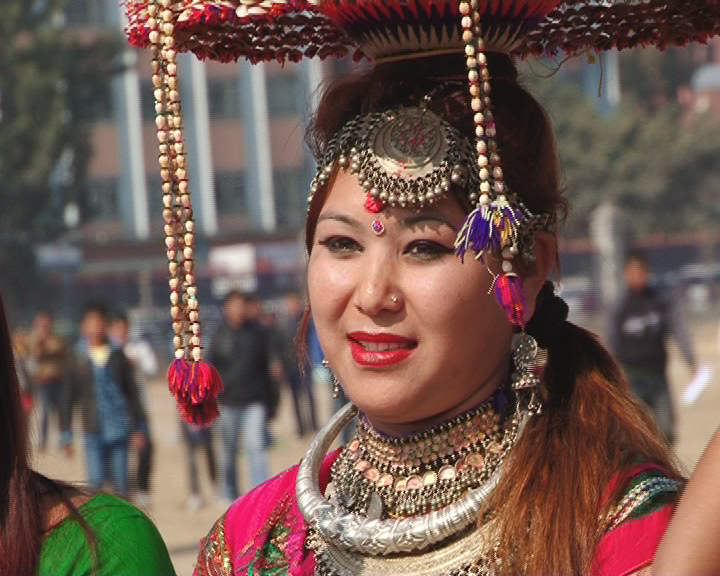Tharu Caste : The Indigenous Inhabitant of Terai In Nepal
Tharu Caste live in 20 different districts of the Terai region of Nepal from East Jhapa to West Kanchanpur, especially in the Inner Madhes. This caste is the most populous caste among the indigenous tribes of Nepal. According to the 2068 census, the population of Tharu caste in Nepal is 17,37,470. The Tharu community has its own language, culture, way of life, customs, script and history. According to sociologist Dor Bahadur Bista, the name Tharu is derived from the fact that the Tharus came from the southern Thar Desert. The area of the Terai inhabited by the Tharus has been known as Tharuwan or Tharuhat since time immemorial.

Tharu Caste
The Tharus have a distinctly different name, surname, language and civilization. Even though they are the same caste on the basis of Tharu name, there are linguistic and cultural differences. From Mechi to Mahakali, there are fifty surnames of Tharus. Of these, the Tharus living in Morang district are called Khausiya (Kaushia) who live on the banks of the Koshindi in Morangia. Similarly, other Tharus include Chitauniya, Lalpuria, Dangaura, Gachchhadar, Rana, Mahato, Vishwas, Sunada, Sardar, Mahantha, Vantha, Vantar, Bhajaura, Bhagat etc. Similarly, Dahit, Kushumya, Satgaonwa, Chamar, Rana, Dangaura, Katharia, Kariya Magharia etc. are in the Tharu Thar from Dang to West Kanchanpur
Tharu are a caste rich in cultural heritage. Their narrative tradition is rich in literature. They have their own costumes, jewelry, traditional style. The Tharus are found to have embraced different types of language, way of life, culture, values, cultural customs, etc., according to different geographical regions. Tharus are nature worshipers. They worship many forest spirits and deities, including the forest goddess.
They especially like to live near the forest and by the river. Since they live near the forest, they often do animal husbandry business. And, being on the river bank, they also do fishing. Their main occupation is agriculture. However, most of the Tharu community involved in this profession are landless. Therefore, most of the Tharus have to work as Kamaiyas and Kamalharis. They make their own homemade materials using their own traditional skills. They are interdependent with natural resources. The main festival of this community is Maghi.

Tharu Caste
They consider it as the new year. On this occasion, they choose their chief (barghar). They live in a disciplined manner in the traditional institutional barghar system. They celebrate Maghi as well as various other festivals from time to time. In these festivals, they enjoy a variety of songs, dances, melodies and rhythms.
Tharu language
The Tharu language belongs to the Bharopeli family. Tharu is the language used by the Tharus living in different districts of the Terai from Mechi to Mahakali. In the census, Tharu language has been classified as Tharu language in the eastern and western Tharu, Dangaura Tharu and another group in western Nepal, Rana Tharu.
Various newspapers, books and literary works have been published in the Tharu language, and radio programs, documentaries and films have been made. According to the 2068 census, about 15,29,875 people (including Dangaura and Rana Tharu) speak the Tharu language. Apart from Nepal, Tharu language is also spoken in India. However, the number of Tharu speakers is not certain.

Tharu Caste
Differences in Tharu language
The Tharu language belongs to the Bharopeli family. The Tharu language is the language spoken by the Tharus living in different districts of the Terai from Mechi to Mahakali. When the government conducted the census, it is seen that the Tharu language was classified into only two groups in the east and west, Tharu, Dangaura Tharu and another group in western Nepal, Rana Tharu. But according to linguists, there are many differences in the Tharu language. Since the Tharus live from the far west to the east, it is natural for the language to be diverse.
According to linguistics, every ten dictionaries are differentiated in the same language. According to him, it is natural for the Tharu language to change. Gopal Dahit, who has also edited the Tharu-Nepali-English dictionary, has classified the Tharu language into nine languages. (1) Dangaha (2) Deshauri (3) Rana (4) Saptaria (5) Chitaunia (6) Deukharia (7) Bhowrahiya (8) Nawalpuria (9) Sunsaria (Dahit, 2062). So Dr. Ganesh Kharal has classified the Tharu language into three main parts namely Eastern, Midwestern and Western (Chaudhary, 2064). Which is briefly identified below.
1) Eastern Tharu Language:
The Tharu dialect spoken in the Eastern Terai of Nepal is the Eastern Tharu language. It can also be called ‘Morang Saptaria’. There are three major dialects in this dialect, Morangia, Saptaria and Rajbanshiya.
2) Midwestern Tharu language:
Midwestern Tharu language is spoken in Chitwan, Bara, Parsa, Rautahat and Nawalparasi districts. There are two major dialects in this dialect, Chitwaniya and Nawalpuria.
3) Western Tharu language:
Western dialect is spoken in Dangdeukhuri, Surkhet, Bardia, Banke, Kailali and Kanchanpur districts. It has five divisions namely Dangaura, Deukhuria, Rana, Katharia and Desauri. The main area of Dangaura is Dang Valley. The people who have migrated from here are scattered in Banke, Bardiya, Kailali, Kanchanpur, Surkhet, Rupandehi and Kapilbastu districts. From the point of view of the speaker, Dangaura is in the first place in the Tharu language. Linguistically speaking, the Tharus, like the Rais, seem to have dozens of different languages.
Comment Here!